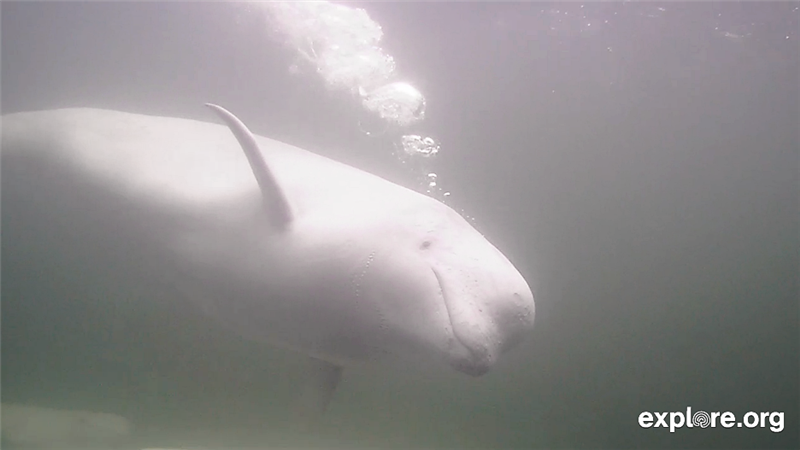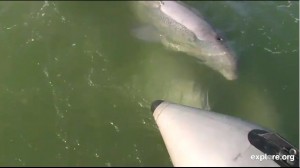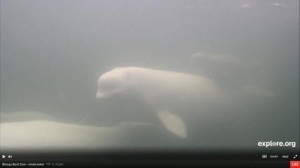When a BBC Frozen Planet film crew set up a tower to film beluga whales in Arctic waters, they didn’t expect to infringe on their beauty regiments. The whales, whose skin softens in the warmer waters where the tower was set up, used the tower to somewhat violently slough off dead skin! Read the full story here.
Beluga whales return to the Churchill River estuary every summer to feed on the large schools of capelin and to give birth to the next generation of whales. From our Beluga Whale Boat Cam and Underwater Cam you can see all their secrets live and up close.
Did You Know?
- Unlike most whales, the beluga lacks a dorsal fin, making it easier for them to swim under Arctic ice sheets.
- Belugas emit sonar from their distinguishable round heads.
- Early whalers who heard the sounds of belugas through the hulls of their ships called them “Sea Canaries.” Beluga whale noises are a combination of high pitched whistles and squeals, varied with clicking and chuckling sounds.
- The name beluga comes from a Russian word meaning ‘white’. In fact, only the adult whales are white in colour. The calves are born a dark grey or brown.
- In the Churchill area, male belugas measure up to 5 metres long (15 feet) and weigh about 600 kg (1,500 lbs). The females are considerably smaller. Newborn calves average 1.5 metres long (5 feet) and weigh 34 to 45 kg (75 to 100 pounds).





